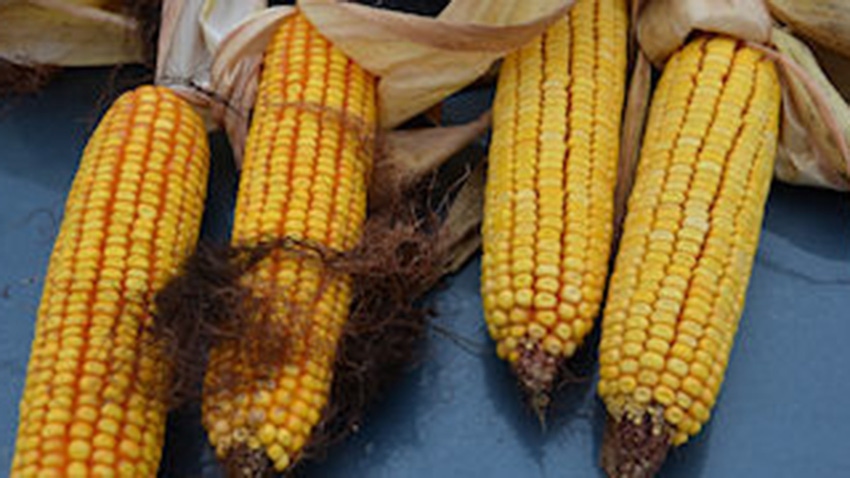
Yield estimates in corn are a big talking point before harvest. This year there is still interest after harvest. How close were the estimates? What caused one hybrid with the same or more kernels per ear to yield less than another hybrid?
One thing that has changed when it comes to yield estimates is the factor to use that relates to number of kernels per bushel. The standard for years was 90,000 kernels per bushel, and the division factor in the formula was 90.
Which do you prefer? Here are ears of the two hybrids. Hybrid A is on the right, with 14 rows of kernels. Hybrid B is on the left, with 16 to 18 rows of kernels. Find out which yielded best tomorrow!
Bob Nielsen, Purdue University Extension corn specialist, told farmers this fall just before harvest began that with today's hybrids, 80,000 kernels per bushel and 80 are probably more accurate numbers. If grain fill was good and the kernels are deep and full, you might be able to drop it to 75 or even 70. The formula in the Purdue University Corn & Soybean Field Guide used 90 as the factor for years, but now uses 80.
Rumbling in the seed industry indicates some seed companies may be taking a closer look at this as well. Their interest is whether there is a difference amongst the products they sell in kernels per bushel that could make a difference in yield estimates.
Recently, I walked a small field planted with two hybrids form one company. One was somewhat earlier than the other hybrid. Hybrid A consistently had 14 rows around the cob, about 38 kernels per row. Hybrid B had 16 to 18 rows around, 40 kernels per row. Stand counts for both at harvest, counting only stalks with ears, were around 29,000 plants per acre.
The formula for hybrid A: 14 times 38= 532 x 29= 15,428. Divide by 80 and its 193. Divide by 90 and its 172. At 75, it's 206, and at 70 its 220.4.
The formula for hybrid B: 17 times 40 =680 x 29 =19,720. Yields at 80, 90, 75 and 70, respectively, would be: 247, 219, 263 and 282.
Related: Yield Monitors Might Be Smarter Than You Think
Before running the numbers, just walking the plots doing population counts just before harvest, I was very confident Hybrid B was 20 bushels per acre better, and fairly confident it could be 30 to 40 bushels per acre better. The numbers seemed to back me up.
Was I right? Tune in to our lead item tomorrow and find out!
About the Author(s)
You May Also Like




